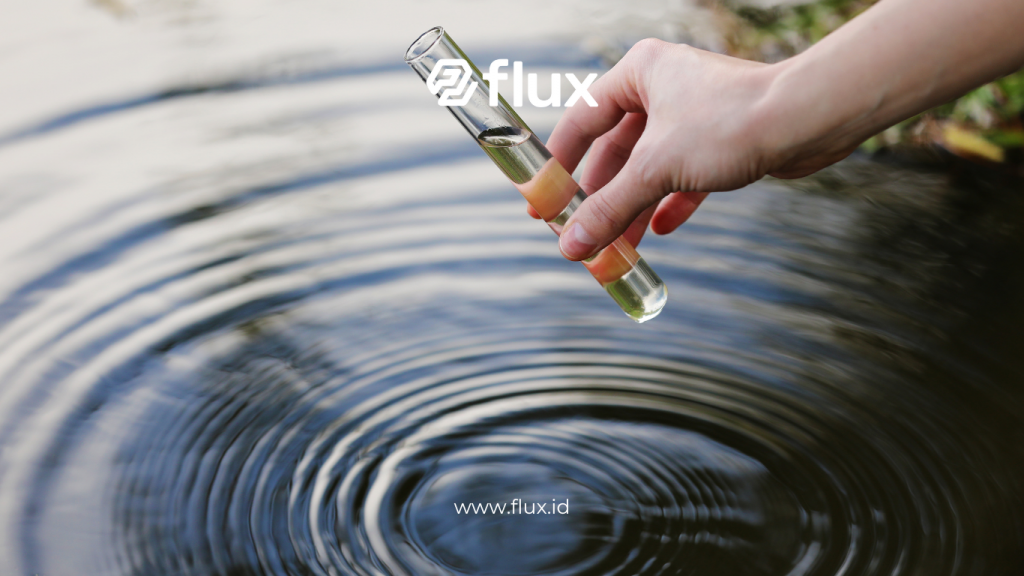Don't miss our holiday offer - 20% OFF!
In modern agriculture, water quality plays a crucial role in the success of irrigation and plant health. Water quality sensors provide a technological solution designed to monitor critical parameters such as pH, temperature, mineral content, and oxygen levels in water. This article will discuss how water quality sensors work and how this technology helps improve irrigation management while maintaining plant health.
Contents
What Are Water Quality Sensors?

Water quality sensors detect and measure various parameters in water that affect its quality. These parameters include:
- pH: Measures the acidity or alkalinity of water.
- Temperature: Identifies the optimal water temperature for plants.
- Turbidity: Measures the amount of suspended particles in the water.
- Mineral Content: Detects essential minerals and contaminants.
- Dissolved Oxygen Level: Indicates how well the water can support aquatic life.
Main Components of Water Quality Sensors
- Sensor Electrodes: These components detect specific parameters such as pH, temperature, and mineral content.
- Transmitter: This part translates signals from the electrodes into readable data.
- Processing Unit: It processes the collected data to provide accurate and real-time information.
- Calibration System: It maintains measurement accuracy through automatic or manual adjustments.
How Do Water Quality Sensors Work?

Read More: How Water Quality Sensors Work to Improve Safety and Health in School Environments
Water quality sensors detect chemical or physical changes in the water. They work through the following steps:
- Parameter Detection: The sensor electrodes are exposed to the water, where they detect parameters like pH or temperature.
- Data Processing: The transmitter sends signals to the processing unit, which processes and calibrates the data.
- Data Output: The resulting data is displayed on a monitor or irrigation control system.
- Corrective Action: Based on the data, the irrigation system adjusts to improve water quality or take other necessary actions.
Types of Water Quality Sensors
- pH Sensors: These sensors measure the water’s acidity level, which is crucial for maintaining plant nutrient balance.
- Temperature Sensors: They monitor water temperature to ensure optimal conditions for plants.
- Turbidity Sensors: These sensors measure water clarity, which helps identify particles that could affect plant growth.
- Dissolved Oxygen Sensors: They assess oxygen levels in water, which is important for root health.
- Conductivity Sensors: They detect mineral and salt levels in water, providing an overall assessment of water quality.
Benefits of Water Quality Sensors in Agriculture

Read More: Water Current Sensors: Key Tech for Revealing Flood Flow Secrets
- Improving Irrigation Efficiency: Sensors provide real-time data, allowing farmers to adjust irrigation according to the specific needs of plants.
- Reducing Water Usage: Accurate data helps optimize water use, which reduces waste and operational costs.
- Preventing Plant Damage: Sensors identify water quality issues early, enabling preventive actions to protect plants.
- Reducing Chemical Usage: Data from sensors helps reduce excessive use of fertilizers or pesticides.
- Enhancing Crop Quality: By maintaining good water quality, plants grow healthier, resulting in better and higher-quality yields.
Challenges in Using Water Quality Sensors
- Installation and Maintenance Costs: High initial investment and the need for regular maintenance can be barriers for some farmers.
- Technology Limitations: Some sensors have limitations in measuring certain parameters or are susceptible to environmental disturbances.
- Regular Calibration Requirements: Sensors need proper calibration to maintain accuracy, which can be challenging in field conditions.
Future of Water Quality Sensors in Agriculture

Read More: IoT Sensor Technology in Agriculture: How to Efficiently Monitor Plant Health and Soil Conditions
The development of water quality sensor technology continues to evolve with innovations that are more accurate and durable. Future trends include integrating with IoT (Internet of Things) technology to enable automatic irrigation management through smartphone applications or centralized control systems.
Research also focuses on making sensors more affordable and user-friendly for small-scale farmers. As a result, this will increase the accessibility of technology and support sustainable agriculture in the future.
Conclusion
Water quality sensors play a vital role in optimizing irrigation and maintaining plant health. This technology allows farmers to monitor water conditions in real-time and take corrective actions, enhancing efficiency and agricultural yields. Although challenges remain, technological advancements and future innovations will likely make water quality sensors more accessible and applicable across various scales of agriculture.
By understanding how water quality sensors work and their benefits, farmers can take more effective steps in managing water resources, boosting productivity, and supporting sustainable agriculture practices.





